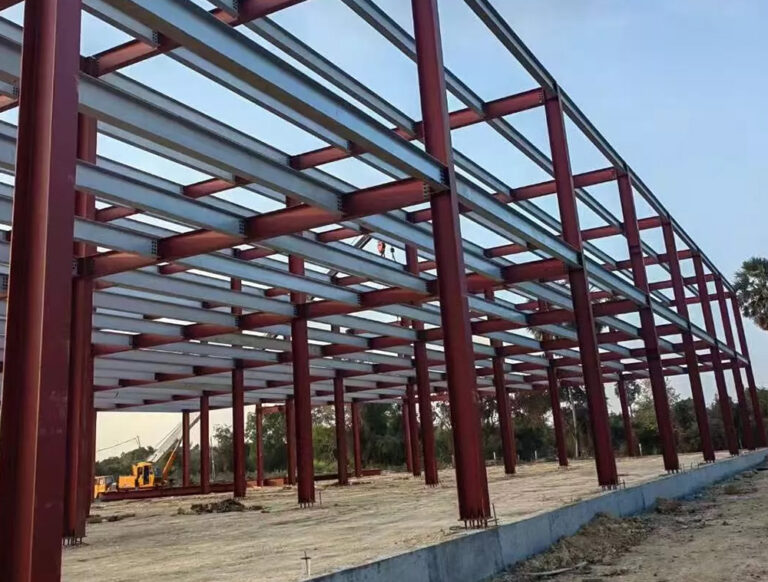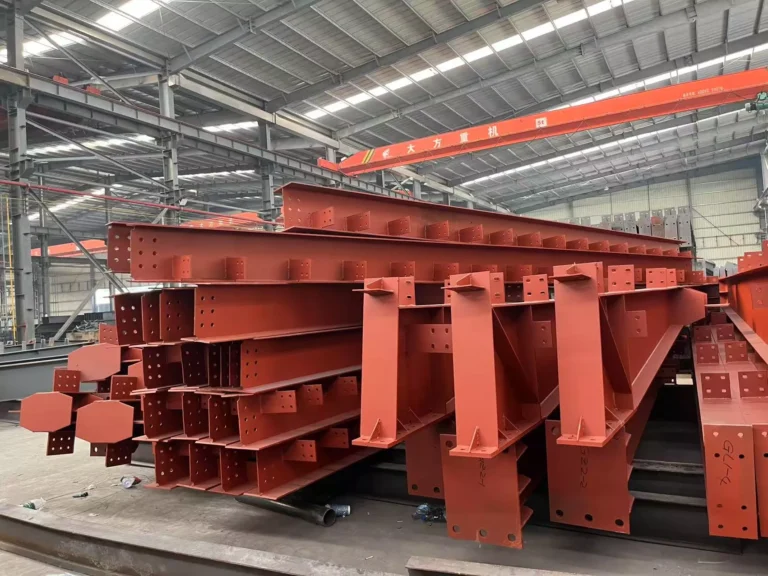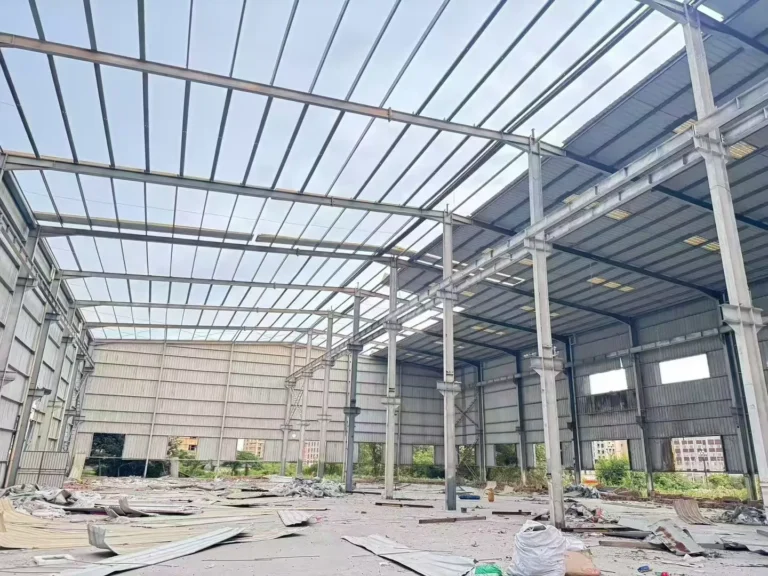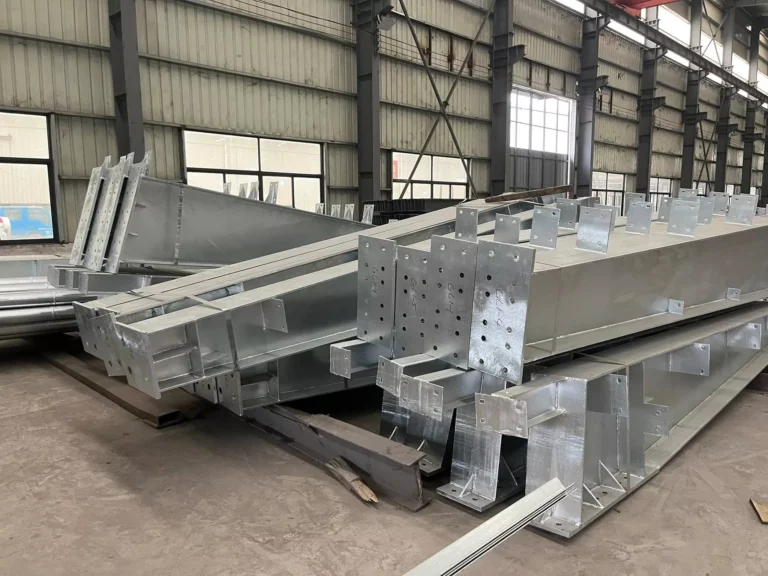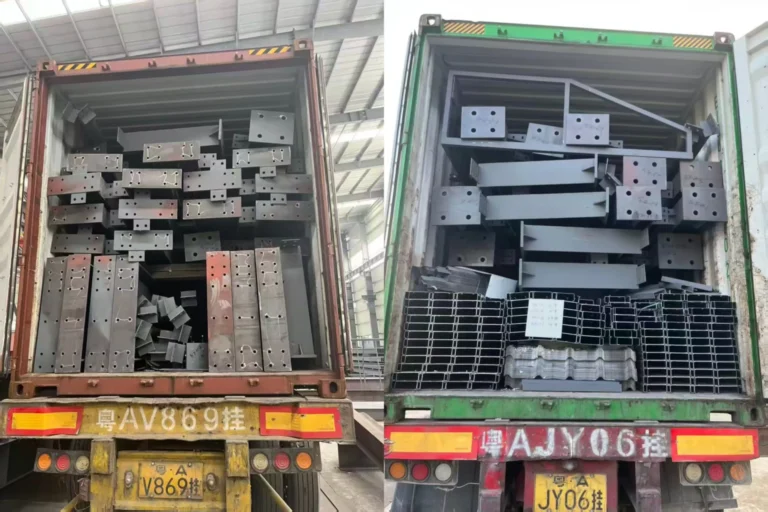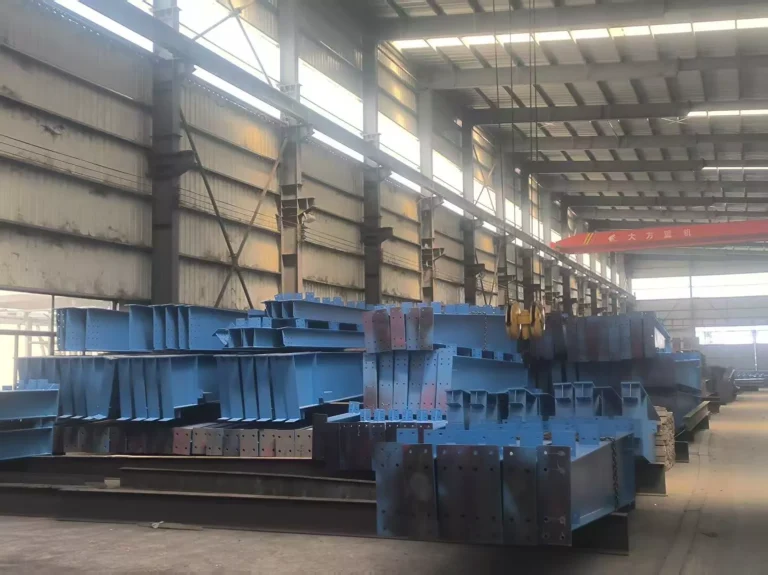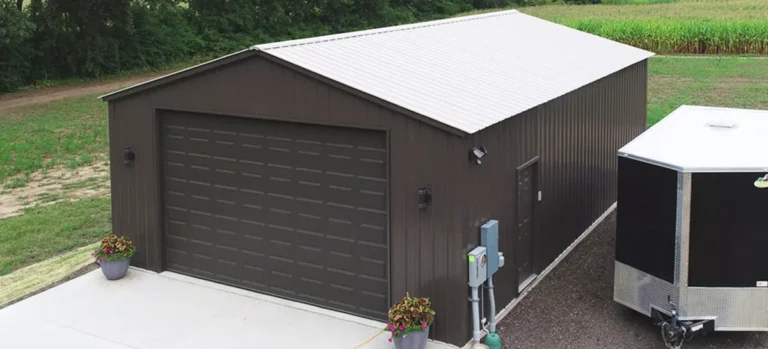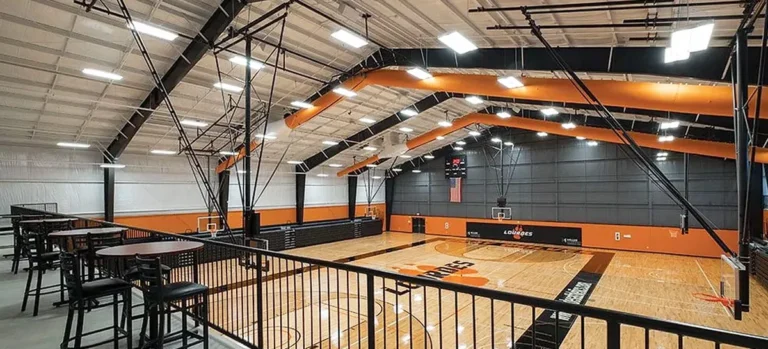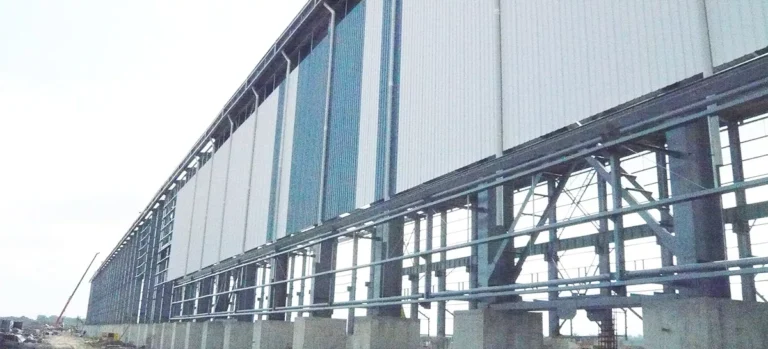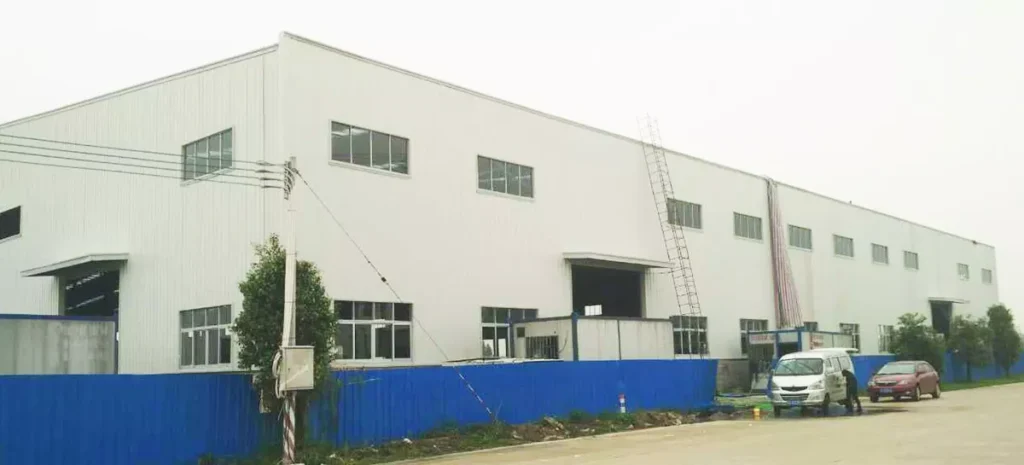
Steel structure warehouses are known for their durability, low maintenance, and long lifespan. However, like any structure, regular maintenance is essential to preserve the integrity, safety, and functionality of your building over time. Proper upkeep not only ensures that your steel warehouse continues to serve its purpose efficiently but also prevents costly repairs and prolongs its service life. In this article, we’ll outline key maintenance tips to help you keep your steel structure warehouse in top condition and ensure its longevity.
1. Inspect the Structural Components Regularly
Although steel is a highly durable material, it’s still important to check the structural components of your warehouse regularly. Inspections should focus on the condition of the steel frame, beams, columns, and roof trusses to detect any potential issues early.
- Check for Rust or Corrosion: Steel is resistant to corrosion, but it can still rust if exposed to excessive moisture or if protective coatings are compromised. Inspect the exterior and interior surfaces for signs of rust or corrosion. If you notice any, treat them immediately with rust inhibitors or anti-corrosive coatings to prevent further damage.
- Examine Welds and Joints: Over time, welds and joints can weaken due to stress, temperature changes, or impact. Regularly inspect these areas for cracks, splits, or signs of movement. Any structural weakness should be addressed by a professional as soon as possible.
- Inspect Roof and Gutters: Steel roofs are durable, but they can still suffer from wear and tear due to weather conditions. Inspect the roof for damage such as loose panels, dents, or leaks. Check gutters and downspouts to ensure they are free from debris and functioning properly to prevent water accumulation, which can cause rusting or damage over time.
Tip: Schedule a professional inspection at least once a year to check for hidden issues in areas that are hard to reach or inspect.
2. Maintain the Exterior Coating and Paint
One of the key features that protect steel structures from environmental damage is the exterior coating or paint. A well-applied and maintained coating prevents rust, corrosion, and UV degradation.
- Reapply Protective Coatings: Over time, the paint or coating on your steel warehouse may wear off due to exposure to sunlight, rain, wind, and temperature fluctuations. Regularly check the condition of the paint or coating and reapply it as necessary to maintain protection. This is particularly important for areas exposed to high humidity or saltwater environments, where corrosion risks are higher.
- Choose the Right Coating: When selecting coatings, opt for high-quality anti-corrosion paint or galvanizing for steel. These coatings offer long-lasting protection against rust, especially in regions with extreme weather conditions. If the original paint starts to fade or peel, consider stripping it off and applying a fresh layer.
Tip: If you’re unsure about the condition of your coating, hire a professional to evaluate its effectiveness and recommend appropriate maintenance steps.
3. Ensure Proper Drainage Around the Warehouse
One of the most common causes of structural damage to steel buildings is water accumulation. Poor drainage systems can lead to water pooling around the foundation, causing rust, erosion, and even foundation settlement.
- Check the Foundation: Inspect the warehouse foundation regularly for any signs of water pooling or erosion. If water accumulates near the base of the structure, it could weaken the foundation over time.
- Maintain Gutters and Downspouts: Clean gutters, downspouts, and drainage systems to ensure that water is being diverted away from the warehouse properly. Clogged gutters can lead to water overflow, which may damage the exterior and foundation of the building.
- Slope the Ground Properly: Ensure the ground surrounding the warehouse slopes away from the building. Proper grading will help water flow away from the structure and prevent pooling around the foundation.
Tip: Implement a regular schedule for clearing gutters, drains, and ditches to ensure that the water runoff is managed effectively.
4. Check the Doors, Windows, and Seals
The doors and windows in your steel structure warehouse are critical for security, insulation, and ventilation. Regular maintenance of these components will not only ensure smooth operation but also contribute to the overall safety and energy efficiency of the building.
- Inspect the Doors and Windows for Damage: Over time, doors and windows may experience wear and tear, such as warping, misalignment, or broken seals. Check for cracks, leaks, or any areas where air or water may be entering the building.
- Lubricate Moving Parts: If your warehouse has rolling doors or automated entry systems, make sure to lubricate the moving parts regularly to prevent friction and wear. Keep the tracks clear of debris to ensure smooth opening and closing of doors.
- Seal Gaps: Ensure that all seals around doors and windows are intact. Gaps or worn seals can lead to energy loss, moisture intrusion, and even pest infiltration. Replacing worn seals promptly can improve the building’s insulation and protect the warehouse contents.
Tip: Regularly test emergency exit doors and windows to ensure that they open and close smoothly and meet safety regulations.
5. Maintain the HVAC and Ventilation Systems
Efficient HVAC (heating, ventilation, and air conditioning) systems are crucial for maintaining a comfortable working environment inside your warehouse. Well-maintained systems help regulate temperature, air quality, and humidity, which can protect both your employees and stored goods.
- Change Air Filters: Over time, air filters can become clogged with dust and debris, reducing the efficiency of the HVAC system. Regularly change or clean the filters to keep the air flowing freely and reduce strain on the system.
- Check Ductwork for Leaks: Inspect the ducts for any signs of leaks or damage, which can lead to energy loss and inefficient cooling or heating. Seal any gaps promptly to ensure optimal performance.
- Inspect Ventilation Fans: Ventilation fans are essential for maintaining airflow in large warehouse spaces. Inspect the fans for dust buildup or damage and clean them regularly to ensure proper operation. This is particularly important for warehouses storing materials that generate dust or fumes.
Tip: Have a professional HVAC technician perform an annual inspection and servicing of the system to ensure it’s functioning optimally.
6. Maintain Flooring for Safety and Efficiency
The floor of your steel structure warehouse is subject to heavy foot traffic, machinery, and equipment. Regular maintenance ensures the safety of workers and the efficiency of operations.
- Inspect for Cracks or Damage: Concrete floors may crack over time due to the weight of machinery, forklifts, or other equipment. Check for cracks and holes that could pose a safety risk. Small cracks can be sealed, but larger issues may require professional repairs.
- Clean the Floors Regularly: Sweep and clean the floors regularly to prevent dust, debris, or oil buildup. Spills should be cleaned promptly to prevent accidents and maintain a safe working environment.
- Check for Slip Hazards: Ensure that the floors are not slippery, especially in areas where liquids or dust may accumulate. Use non-slip coatings or mats where necessary to prevent falls and accidents.
Tip: If your warehouse operates in high-traffic areas or handles hazardous materials, consider applying epoxy flooring, which is durable and easy to clean.
7. Monitor for Pest Infestations
Steel structure warehouses can be susceptible to pest infestations, particularly if there are openings in the building or gaps in the exterior seals. Rodents and insects can damage stored goods, spread contamination, and even compromise the structural integrity of the building.
- Inspect for Holes or Gaps: Regularly check for any cracks or holes in the warehouse’s exterior that could allow pests to enter. Pay close attention to door seals, window seals, and areas where pipes or cables enter the building.
- Set Traps and Use Deterrents: Implement pest control measures such as traps, bait, and natural deterrents. If you detect signs of infestation, act quickly to mitigate the issue before it causes significant damage.
Tip: Work with a pest control professional to inspect and manage pest risks regularly.
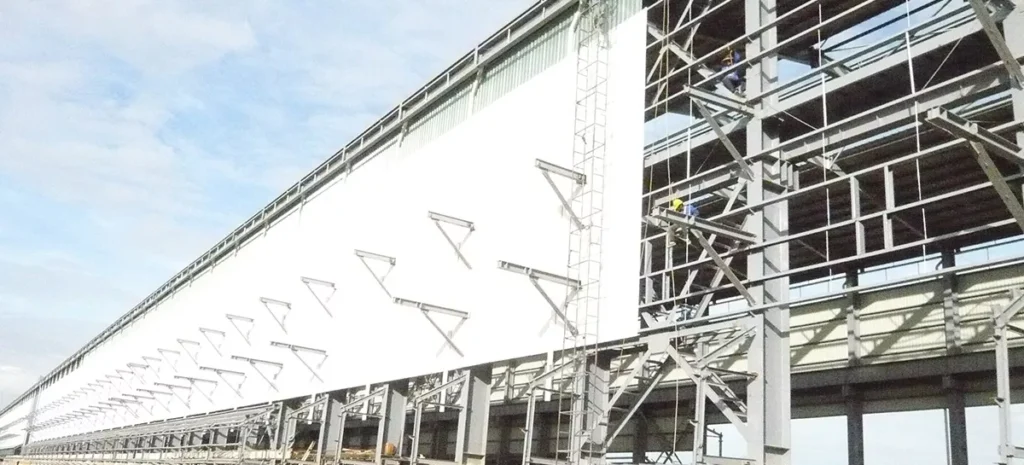
Conclusion
Steel structure warehouses are designed to be low-maintenance and long-lasting, but regular care and attention are essential to preserve their structural integrity and ensure they continue to meet the demands of your business. By following these maintenance tips and staying on top of inspections, you can extend the lifespan of your warehouse, minimize costly repairs, and keep your operations running smoothly.
At Ganyo Steel Structure, we are committed to providing high-quality steel buildings that are durable, cost-effective, and easy to maintain. For more information on how we can help you with your warehouse construction or maintenance needs, contact us at lizzy@ganyosteelbuilding.com.

